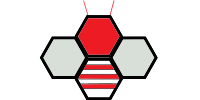Multiple contributions at SIDIM 2019
Our latest work was presented at SIDIM 2019 (Seminario Interuniversitario de Investigación en Ciencias Matemáticas), at UPR Humacao, Puerto Rico[Proceedings] Presentation on the integration of detection, tracking and pollen detection for the automatic system that can characterize foraging patterns and differentiate between pollen bearing and non-pollen bearing bees. First results on 8 days of monitoring […]
Paper: Clustering Honeybees by its Daily Activity
Edgar Acuña presented our paper about the analysis of RFID data provided by the team of Yves Le Conte at INRIA Avignon, France. Clustering was applied to determine bees with similar activity and to estimate the time during the day when the bees are most active: Edgar Acuna, Velcy Palomino, Jose Agosto, Rémi Mégret, Tugrul […]
Paper: Multiple Insect and Animal Tracking in Video using Part Affinity Fields
Master student Ivan Rodriguez presented his work at ICPR conference in Beijin: Ivan F. Rodríguez, Rémi Mégret, Roian Egnor, Kristin Branson, José L. Agosto, Tugrul Giray, Edgar Acuña . “Multiple Insect and Animal Tracking in Video using Part Affinity Fields”, Visual observation and analysis of Vertebrate And Insect Behavior (VAIB), International Conference on Pattern Recognition […]
Paper: Applying Functional Data Clustering for Analyzing Circadian Cycles of Honeybees
New paper was presented by Edgar Acuña this summer: R. Trespalacios, E. Acuña, V. Palomino, J. Agosto, R. Mégret, M. A. Giannoni-Guzman, “Applying Functional Data Clustering for Analyzing Circadian Cycles of Honeybees”, International Conference on Data Mining (ICDM), Istanbul, Turkey, July 2018. Abstract: In this paper, we analyze the periodic cycle of honey- bees when […]
R package CircadianDynamics
This R-package contains various functions to clean, visualize and analyze the dynamics of circadian parameters from time series of several types of data. The types of data and formats supported in the package include: 1) temperature, humidity, and light from the HOBO sensors (U12-012); 2) barometric pressure, wind speed and direction from the HOBO Micro […]
Presentation at CBMM retreat
Congratulation to graduate student Ivan Rodriguez for the nice presentation of his work on honeybee detection, tracking and classification at the annual retreat of the Center for Brains Minds + Machines (CBMM), on May 25th at the McGovern Institute for Brain Research at MIT. Here is the link: https://www.youtube.com/watch?v=Qo5ECWdb58I
Short paper RFIAP2018
Our short paper was accepted at RFIAP. This work explore the use of Convolutional Neural Networks for the pose estimation of honeybees (localization of their body parts) from images, using a user trainable model. It shows promising results with over 95% of correct detection. These results open new possibilities for automated tracking of a rich […]
Meeting May 18
Next project meeting will be held in UPR Río Piedras, College of Natural Science, Friday May 18. 2018. Participants will meet at 9am in room A-233. General public is welcome to come discuss during the poster session, 1-3pm in the vestibule (see flyer: BigDBee-flyer-poster-session-2018May18)
PRISM 2018: Oral presentations
Congratulation to Christian Esteves, Emmanuel Nieves and Jeffrey Chan for their oral presentation at PRLSAMP’s Puerto Rico Interdisciplinary Scientific Meeting (PRISM) 2018, as part of the UPRRP Math and CCOM delegation ! https://prlsamp.rcse.upr.edu/index.php/events/jtmprism The abstracts can be downloaded here: http://prlsamp.rcse.upr.edu/downloads/JTM_PRISM_2018_Abstracts.pdf [1] Christian Esteves, Emmanuel Nieves, Rëmi Mégret, Iván Rodriguez: “Web App development for multi user […]
Open positions: research assistants
Open positions for undergraduate and graduate research assistants in Computer Science and Data Science Send us an email, join the team ! The project provides opportunities to work on various topics, according to the skills and motivation of the students interested: – Computer vision: automatic analysis of video data (bee tracking, activity recognition…) – Webapp development: app […]
